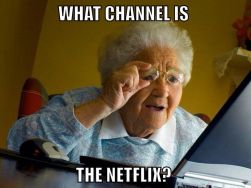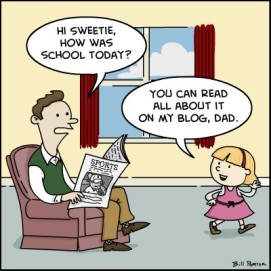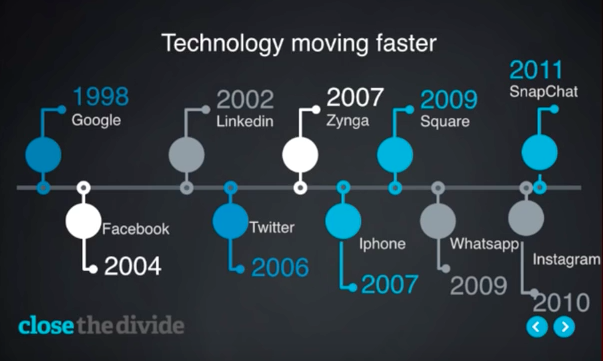
The Digital Divide
Hello everyone and welcome to this week’s blog post on The Digital divide in society today
What does this term mean?
Digital divide is a term that refers to the gap between demographics and regions that have access to modern information and communications technology, and those

that don’t or have restricted access. This technology can include the telephone, television, personal computers and the Internet. The digital divide typically exists between those in cities and those in rural areas; between the educated and the uneducated; between socioeconomic groups; and, globally, between the more and less industrially developed nations. Even among populations with some access to technology, the digital divide can be evident in the form of lower-performance computers, lower-speed wireless connections, lower-priced connections such as dial-up, and limited access to subscription-based content.

How has technology impacted your life?
Technology is moving faster than ever. As I discuss the above slide I want you to think about how some of these technologies have impacted your life. How did we find out anything before 1998? Before 2004 no one ever got poked. Before 2006, ‘LOL’ ‘BRB’ ( Laugh out Loud, Be Right Back) we did not use these terms because twitter did not exist. 2007, the biggest change of all, the iphone is launched. Think about how far you can walk today without seeing those white headphones on someone walking down the street.

2009 WhatsApp was a mobile App that was bought by facebook for 15 billion dollars.
2010 instagram became a new mirror for an entire generation, and was bought for a billion dollars by facebook a year later. Lastly snapchat, whom turned down a 3 billion dollar offer from yahoo 4 years ago. Now they are worth over 20 billion dollars.
Now these are the most influential players in the marketplace our know as ‘ the heavy hitters’ in the industry. But there are also thousands of other companies that have generated massive wealth massive opportunity and are changing how we see the world today to give you an analogy, the television took half a century to become a billion dollar industry it took instagram a year and a half.

Digital divide today
If you ask most people to define the digital divide, most of them would answer that it has to do with those who have access to technology and those who don’t. Ten years ago, they would have been right. However, over the last ten years access to technology has become more and more ubiquitous. In fact, in a 2010 Pew study (Technology Trends Among People of Color), laptop ownership among African Americans and whites broke about even and the percentage of Hispanic and African American Internet users, which was 11 percent in 2000, rose to 21 percent in 2010. A 2011 study showed that 83 percent of

American adults own a cell phone (Americans and Their Cell Phones). Recent advances in mobile phone technology mean that more and more people are using their phones to access the internet. As a result, many previously unconnected populations are connected through their phones. In fact, another Pew study (“For minorities, new ‘digital divide’ seen”) reported that 51 percent of Hispanics, 46 percent of African Americans, and only 33 percent of whites used their phones to access the Internet.
So what does this all mean? Where do we go from here?
We are looking at a completely different kind of divide from my reaesrch. While access has increased substantially, the kind of access varies. Most minorities in the Pew studies reported using their phone for accessing email and the Internet. In 2010 only 56 percent of African American households reported having broadband access compared to 67 percent of white households (Home Broadband 2010). This creates an entertainment vs. empowerment divide. As one of the Pew studies suggests, you can’t fill out a job application through a cell phone or update your résumé on a game console (another way that many minorities report they access the Internet). The divide has shifted from an access issue to a kind of access divide.
______________________________________________________________
Thank you for taking the time to read this blog, please feel free to leave a comment, tune in next week where we look at social media in CyberCulture, bye for now! 🙂